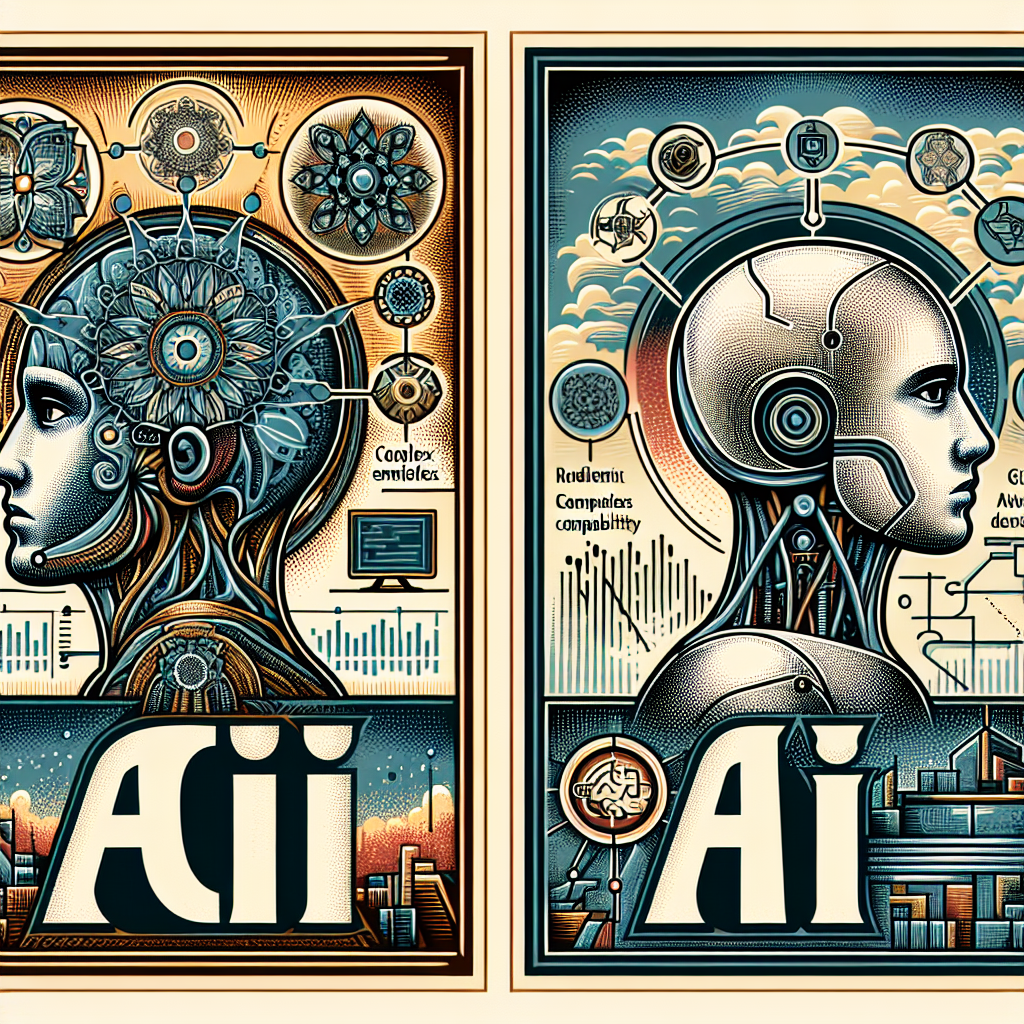Artificial General Intelligence (AGI) and Artificial Intelligence (AI) are two terms that are often used interchangeably, but they actually refer to two distinct concepts with significant differences. Understanding these differences and their implications for the future is crucial as we continue to develop and integrate these technologies into our daily lives.
What is Artificial General Intelligence (AGI)?
AGI refers to a type of artificial intelligence that possesses the ability to understand, learn, and apply knowledge in a way that is similar to human intelligence. In other words, AGI is designed to mimic the cognitive abilities of humans, including reasoning, problem-solving, and decision-making. AGI systems are capable of performing a wide range of tasks across different domains without the need for specific programming or training.
The ultimate goal of AGI is to create machines that can think and act like humans, demonstrating a level of intelligence that is on par with, or even surpasses, human intelligence. This concept has been a long-standing goal in the field of artificial intelligence, and researchers and developers continue to work towards achieving this milestone.
What is Artificial Intelligence (AI)?
On the other hand, Artificial Intelligence (AI) is a broader term that encompasses a variety of technologies and applications that enable machines to perform tasks that typically require human intelligence. AI systems can be designed to perform specific tasks or functions, such as image recognition, natural language processing, and decision-making, without being explicitly programmed to do so.
AI can be further categorized into two main types: narrow AI and general AI. Narrow AI, also known as weak AI, refers to AI systems that are designed to perform specific tasks within a limited domain. These systems are not capable of generalizing their knowledge or skills to new situations outside of their designated scope.
General AI, on the other hand, refers to AI systems that possess the ability to perform a wide range of tasks across different domains, similar to AGI. However, general AI falls short of achieving true human-level intelligence, as it is still limited in its ability to understand and adapt to complex, unstructured environments.
Differences Between AGI and AI
The main difference between AGI and AI lies in their capabilities and scope of intelligence. AGI is designed to replicate the full range of cognitive abilities of humans, enabling machines to think, reason, and learn in a way that is similar to human intelligence. AI, on the other hand, is focused on specific tasks or functions, with varying degrees of complexity and adaptability.
Another key difference between AGI and AI is the level of autonomy and self-awareness that these systems possess. AGI systems are designed to have a high degree of autonomy and self-awareness, allowing them to make decisions and take actions based on their understanding of the world around them. AI systems, on the other hand, are typically programmed to perform specific tasks or functions without the ability to adapt or learn on their own.
Implications for the Future
The development and integration of AGI and AI technologies have the potential to have a significant impact on society, the economy, and the way we live and work. While AI has already made significant strides in various industries, such as healthcare, finance, and transportation, the potential of AGI to revolutionize the way we interact with machines and technology is even greater.
AGI has the potential to transform industries and sectors that have traditionally relied on human intelligence and decision-making, such as healthcare, law, and finance. With the ability to think, reason, and learn like humans, AGI systems can automate complex tasks and processes, increase efficiency and productivity, and drive innovation and growth in new and existing markets.
However, the development of AGI also raises ethical, social, and economic concerns that must be addressed as these technologies continue to evolve. Issues such as privacy, security, bias, and accountability are just a few of the challenges that need to be addressed as AGI becomes more prevalent in society. It is essential for policymakers, researchers, and developers to work together to ensure that AGI technology is developed and deployed in a responsible and ethical manner.
FAQs
Q: Will AGI replace humans in the workforce?
A: While AGI has the potential to automate certain tasks and processes that are currently performed by humans, it is unlikely that AGI will completely replace humans in the workforce. Instead, AGI is more likely to augment human intelligence and capabilities, enabling humans to focus on higher-level tasks that require creativity, critical thinking, and emotional intelligence.
Q: How is AGI different from human intelligence?
A: While AGI is designed to mimic the cognitive abilities of humans, it is important to note that AGI is not a perfect replica of human intelligence. AGI systems are still limited in their ability to understand and adapt to complex, unstructured environments, and they lack the emotional and social intelligence that humans possess.
Q: What are the potential risks of AGI?
A: The development and deployment of AGI technology pose several risks, including privacy, security, bias, and accountability. AGI systems have the potential to be exploited for malicious purposes, leading to unintended consequences and harm to individuals and society as a whole. It is essential for researchers, developers, and policymakers to address these risks and ensure that AGI technology is developed and used responsibly.
In conclusion, AGI and AI are two distinct concepts with significant differences in their capabilities and scope of intelligence. While AI has already made significant advancements in various industries, the potential of AGI to revolutionize the way we interact with machines and technology is even greater. As these technologies continue to evolve, it is essential for policymakers, researchers, and developers to work together to address the ethical, social, and economic implications of AGI and ensure that these technologies are developed and deployed in a responsible and ethical manner.

